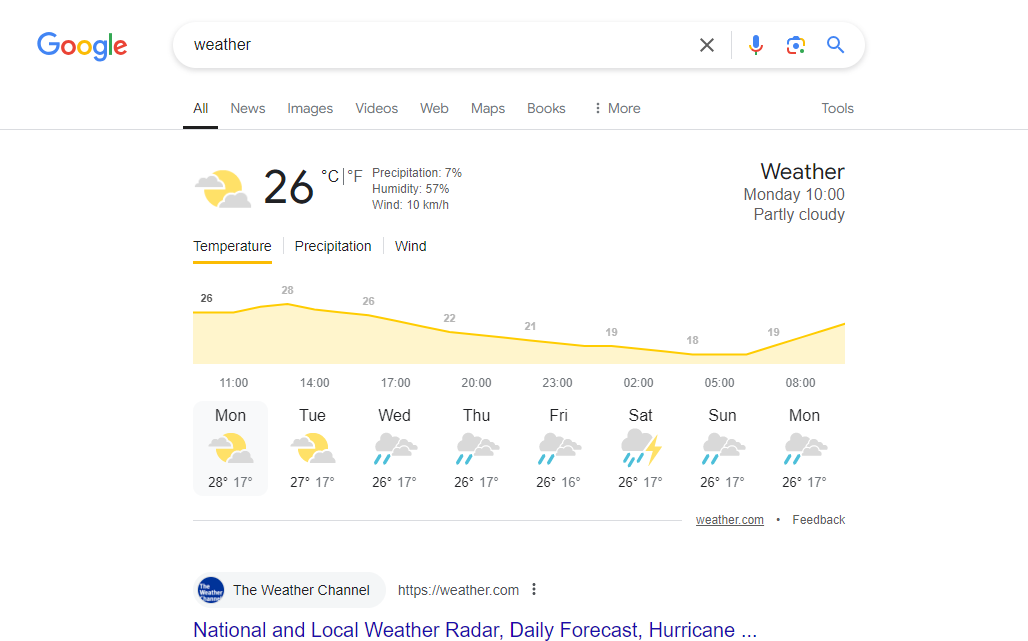This page has moved. If you are not redirected, click here.
How Google forecasts Weather and Air Quality Data
Google’s weather forecasts are created using an internal forecasting system that combines weather models and observations from various global weather agencies. The primary data sources for Google’s weather forecasting include:
- Deutscher Wetterdienst
- Environment Canada
- EUMETNET
- European Centre for Medium-range Weather Forecasts (ECMWF)
- National Oceanic and Atmospheric Administration (NOAA)
- National Weather Service
- Met Office
- Unidata

Google Nowcast
Google also provides a short-term precipitation forecast called the nowcast, which offers predictions up to 12 hours in advance. This feature is available in the United States, Japan, and Europe. The nowcast uses radar and numerical weather prediction data from various sources, including:
- Deutscher Wetterdienst
- EUMETNET
- European Centre for Medium-range Weather Forecasts (ECMWF)
- National Oceanic and Atmospheric Administration (NOAA)
- Met Office
- Japan Meteorological Agency
- NASA, Global Precipitation Measurement Mission
In Japan, Weathernews provides the nowcast forecast using technology developed in collaboration with Google, leveraging Google’s AI analysis capabilities on Weathernews’ high-precision data.
Air Quality Information
Google’s air quality model combines data from various input sources and weights the layers in a sophisticated way. The input layers include:
- Governmental reference monitoring stations
- Commercial sensor networks
- Global and regional dispersion models
- Fire smoke and dust models
- Satellite information
- Traffic data
- Auxiliary information such as land cover and meteorology
Google’s air quality model uses data from numerous global and regional sources. Some of the global data sources include:
- Low-cost sensor data from Purple Air.
- Modified Copernicus Atmosphere Monitoring Service information.
- Modified Copernicus Global Land Cover information.
- Met Office. Contains public sector information licensed under the Open Government Licence v3.0.
- European EEA information under CC-BY-2.5 DK license.
Additionally, Google uses data from various country-specific sources, such as IRCEL - CELINE in Belgium, Air Pays de la Loire in France, and the Environmental Protection Agency (EPA) in Ireland.
Conclusion
Google’s weather and air quality data collection involves a complex system of global and regional data sources, combining information from weather agencies, satellite observations, and various monitoring networks. This comprehensive approach allows Google to provide accurate and up-to-date information on temperature, humidity, and air quality for locations around the world.
References